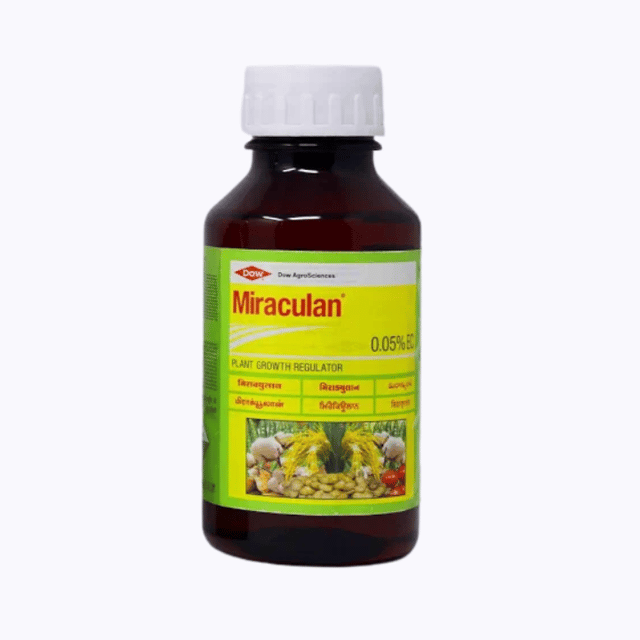Miraculan by Dow AgroScience is a proven plant growth regulator (PGR) trusted by farmers for over a decade. Powered by triacontanol, a naturally occurring long-chain aliphatic alcohol, Miraculan acts as a powerful physiological stimulant for crops—enhancing yield, growth, and crop uniformity across a wide variety of agricultural settings.
Key Agronomic Benefits
- ✔ Enhances Yield: Increases grain output, biomass, and dry matter accumulation
- ✔ Boosts Photosynthesis: Accelerates chlorophyll function and sugar synthesis
- ✔ Early & Uniform Maturity: Helps crops reach harvest stage sooner and evenly
- ✔ Stronger Tillering: Promotes more shoots and branches, especially in cereals
- ✔ Improved Root Development: Longer and more extensive root spread supports better nutrient uptake
- ✔ Increased Enzymatic Activity: Stimulates natural plant enzymes and growth hormones
Technical Overview
| Parameter | Details |
|---|
| Brand | Dow AgroScience |
| Product Name | Miraculan |
| Category | Plant Growth Regulator (PGR) |
| Active Ingredient | Triacontanol |
| Mode of Action | Enhances mineral uptake, water absorption, and photosynthesis |
| Recommended Crops | Cereals, Pulses, Vegetables, Fruits, Cotton, Oilseeds |
How It Works
Triacontanol influences plant metabolism at multiple levels:
- ✔ Stimulates photosynthetic rate and protein synthesis
- ✔ Increases permeability of plant membranes for better nutrient intake
- ✔ Enhances endogenous enzyme and hormone activity
- ✔ Promotes cell elongation, flowering, and fruiting stages
Usage Guidelines
- Apply via foliar spray during active vegetative or early reproductive stages
- Use clean water and apply uniformly across foliage
- Ideal intervals: Every 15–20 days depending on crop cycle
- Consult local advisory for crop-specific dose and timing
Storage & Handling
- Keep in a cool, dry place, tightly sealed
- Do not expose to direct sunlight or excess heat
- Wear protective gloves and eyewear while spraying
- Keep away from children, food, and animal feed
Disclaimer: Product performance depends on soil condition, crop type, and climatic factors. Always follow label instructions and consult an agronomist for tailored recommendations.

